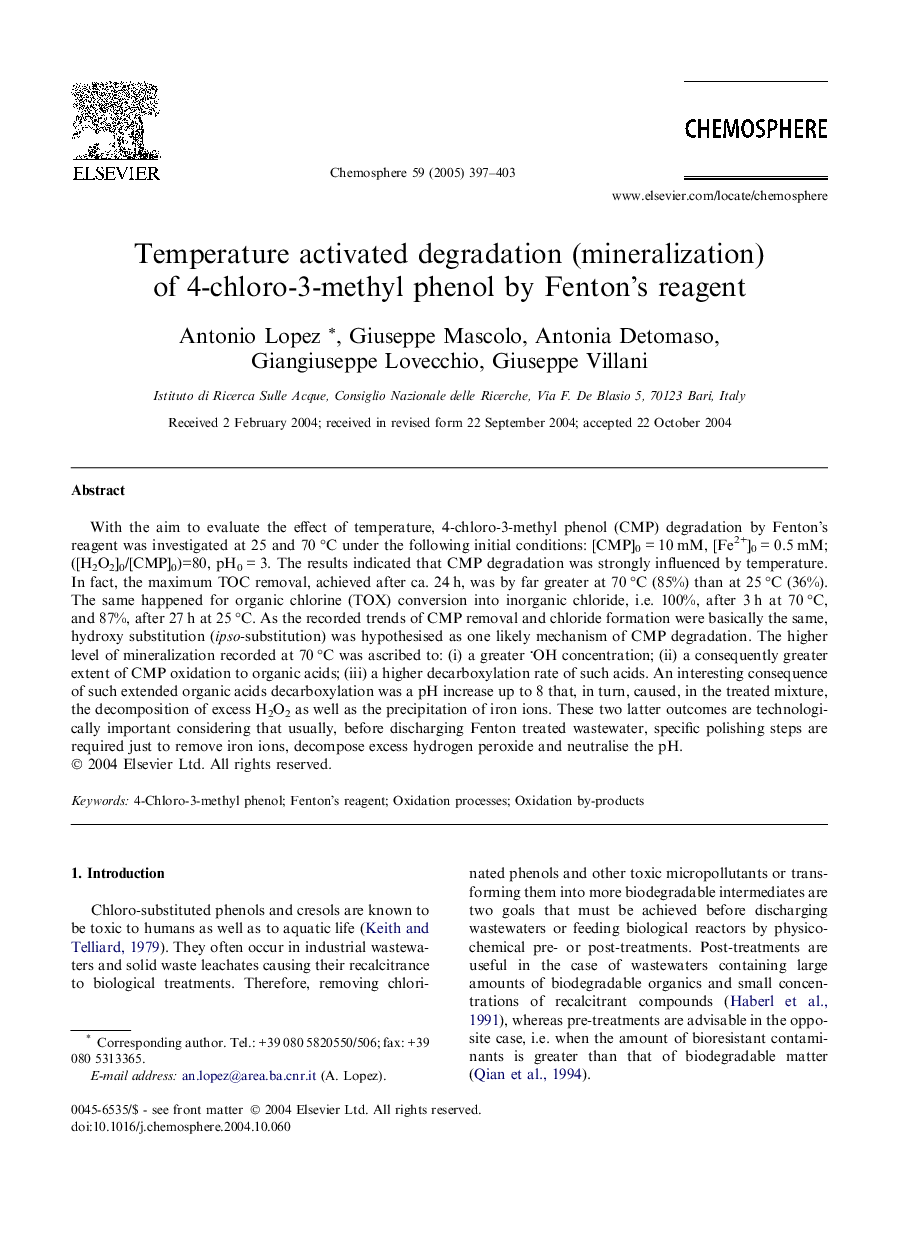| Article ID | Journal | Published Year | Pages | File Type |
|---|---|---|---|---|
| 9451488 | Chemosphere | 2005 | 7 Pages |
Abstract
With the aim to evaluate the effect of temperature, 4-chloro-3-methyl phenol (CMP) degradation by Fenton's reagent was investigated at 25 and 70 °C under the following initial conditions: [CMP]0 = 10 mM, [Fe2+]0 = 0.5 mM; ([H2O2]0/[CMP]0)=80, pH0 = 3. The results indicated that CMP degradation was strongly influenced by temperature. In fact, the maximum TOC removal, achieved after ca. 24 h, was by far greater at 70 °C (85%) than at 25 °C (36%). The same happened for organic chlorine (TOX) conversion into inorganic chloride, i.e. 100%, after 3 h at 70 °C, and 87%, after 27 h at 25 °C. As the recorded trends of CMP removal and chloride formation were basically the same, hydroxy substitution (ipso-substitution) was hypothesised as one likely mechanism of CMP degradation. The higher level of mineralization recorded at 70 °C was ascribed to: (i) a greater OH concentration; (ii) a consequently greater extent of CMP oxidation to organic acids; (iii) a higher decarboxylation rate of such acids. An interesting consequence of such extended organic acids decarboxylation was a pH increase up to 8 that, in turn, caused, in the treated mixture, the decomposition of excess H2O2 as well as the precipitation of iron ions. These two latter outcomes are technologically important considering that usually, before discharging Fenton treated wastewater, specific polishing steps are required just to remove iron ions, decompose excess hydrogen peroxide and neutralise the pH.
Related Topics
Life Sciences
Environmental Science
Environmental Chemistry
Authors
Antonio Lopez, Giuseppe Mascolo, Antonia Detomaso, Giangiuseppe Lovecchio, Giuseppe Villani,
